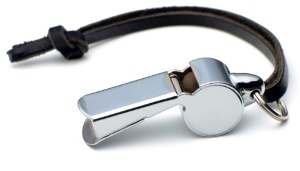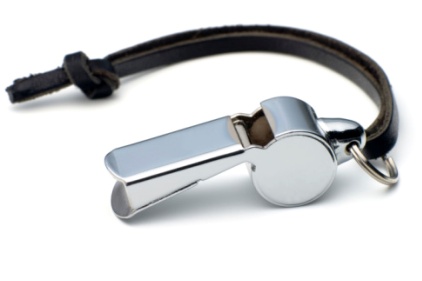 Disciplining employees for violating safety and health rules is a critical component of any good safety and health program. OSHA's recent policy on employee discipline for violating safety and health rules undercuts the use of such discipline and encourages employees to consider possible claims for retaliation. This policy states that employers should only enforce “legitimate safety and health rules" and sets forth a series of possible claims for employees challenging the discipline to consider. The claims provided include: (1) whether the discipline was proportional to the infraction, (2) whether it was consistently applied to other employees and (3) whether it was based on a vague rule.
Disciplining employees for violating safety and health rules is a critical component of any good safety and health program. OSHA's recent policy on employee discipline for violating safety and health rules undercuts the use of such discipline and encourages employees to consider possible claims for retaliation. This policy states that employers should only enforce “legitimate safety and health rules" and sets forth a series of possible claims for employees challenging the discipline to consider. The claims provided include: (1) whether the discipline was proportional to the infraction, (2) whether it was consistently applied to other employees and (3) whether it was based on a vague rule.
Background – Caught Between a Rock and a Hard Place
Section 11(c) of the OSH Act prohibits employers from retaliating against employees for asserting their right to report workplace injuries/illnesses. Therefore, if an employee is injured while breaking a safety rule, any form of subsequent discipline could be viewed as a retaliatory act under this provision, meant to discourage future reporting.
This exact scenario was highlighted in OSHA’s 2012 Whistleblower Memo as one that may violate 11(c) and should therefore be viewed with scrutiny: “[i]n a third situation, an employee reports an injury, and the employer imposes discipline on the ground that the injury resulted from the violation of a safety rule by the employee.” OSHA also notes that a claim for discrimination is present where the discipline is disproportionate to the nature of the safety rule violation or the cited safety rule is vague as written.
In this regard, OSHA has inserted itself into employers’ discipline policies, warning of the potential 11(c) violations described above, yet simultaneously encouraging employers to “maintain and enforce legitimate workplace safety rules in order to eliminate or reduce workplace hazards and prevent injuries from occurring in the first place.”
Indeed, employers are still permitted to take adverse action against an employee where it is “predicated upon nondiscriminatory grounds.” 29 C.F.R. § 1977.6(a).
As a result, when an employee is injured in the course of violating a safety rule, employers find themselves in a precarious position – if the employer enforces its safety program, as OSHA encourages, it simultaneously exposes itself to potential 11(c) liability.
Effective Employer Response – Knowing the Questions OSHA Will Ask
The key to successfully combating 11(c) claims is a good first response that gets ahead of OSHA’s investigation and effectively conveys that the contested discipline lacked discriminatory intent; i.e., the fact that the employee reported his injury had nothing to do with his discipline. The best way to accomplish this is to provide OSHA with written documentation (e.g., a termination report or letter) that the employee was justifiably terminated solely for violating a safety rule. Employers can also do this by preemptively addressing the questions OSHA has instructed their investigators to ask during their investigation:
- Does the employer consistently impose equivalent discipline against employees who violate the safety rule in the absence of an injury? I.e., How is the safety rule enforced in situations that do not involve injury?
- Does the employer monitor for compliance with the safety rule in the absence of an injury?
- Is the language of the cited safety rule that was violated reasonable so as not to be too vague? E.g., “employees must work carefully.”
Each of these questions is specifically designed to reveal whether the employer used a safety rule violation as a pretext to discriminate against an injured employee.
Employers may also want to consider other ways to demonstrate that the employee’s injury was irrelevant to the decision to impose discipline. For example, in cases of termination, an employer may point to the fact that other employees who have been injured still retained their jobs. An employer may also point to provisions of its written safety program that require employees to immediately report injuries/accidents to their supervisor. This can serve as circumstantial evidence that the employer encourages a culture of reporting injuries.
We have seen these types of discrimination claims grow with greater frequency in the past year, and expect to them to continue to grow. Employers can certainly expect OSHA to devote a corresponding increase in resources to investigate them – the OSHA FY 2014 budget request included a proposed increase of $5.9 million and 47 additional full-time employees or the agency’s whistleblower protection programs.
Regardless, employers should not be deterred from imposing employee discipline (where warranted) for fear of a looming 11(c) whistleblower claim. As long as the employer is adequately prepared to address the questions above, it can create an effective response that may lead OSHA to conclude the employee’s complaint is without merit.

Recent Comments
In addition to the personal hardship and loss...
No one will know the answer to this...
Bad drivers don't have to ruin your day...
Healthcare workers face a number of serious safety...
In my experience, truck drivers are treated with...